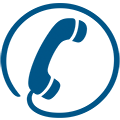Frequently Asked Questions
Regional District's operate under much the same legislation as municipalities, villages and towns, but budgeting for and financing works and services is more complex. In a municipality, there is basically one taxpayer. A property owner in a municipality pays taxes, which are pooled and then used by the municipality to pay for services across the municipality. There are exceptions to this rule, but generally speaking every property owner within municipal boundaries contributes to municipal programs and infrastructure wherever the service is delivered inside the municipality.
Regional Districts finance services on a fundamentally different basis. Regional District taxpayers come together in groups to pay for their services, which means that what you pay for depends on where you live in the Regional District.
For instance, there are three separate groupings that pay for transit services in the Regional District. In the southern portion of the District Electoral Areas A (Cedar), a small portion of Area C (Pleasant Valley), the District of Lantzville and the City of Nanaimo pool resources for our Southern Community Transit Service. In the northern portion of the District the municipalities of Parksville, Qualicum Beach and Electoral Areas E (Nanoose peninsula), G (French Creek) and H (Bowser/Deep Bay) pay for transit services. Property owners in Electoral Areas B (Gabriola Island), C (Extension) and F (Coombs-Hilliers/Errington) do not pay taxes to support transit services and no direct routes go through those areas. However, when taxpayers from those non-contributing areas use the buses they pay the regular fare and indirectly contribute towards the cost. If you follow the Electoral Areas link on the main page of our web site you will be able to see a list of the services paid for by the Electoral Area you live in.
How To Read Your Utility Bill?
User rates are charged to buildings connected to water and sewer systems. The Regional District also provides curbside garbage and recycling collections services to most residential properties. You are billed directly by the Regional District for all or a portion of the cost of providing those services - that's called a user rate bill. We also recover some of the cost of providing water and sewer services through your property taxes.
User rates apply to each separate residential unit. That means a home with a suite, or a property with more than one residence on the land will pay garbage & recycling and sewer user rates for each unit.
In most cases properties are serviced by a single water meter. In cases where there is more than one unit connected to a single water meter, the total water consumption is divided by the number of units for an average per unit, the user rate per unit is calculated and then multiplied back by the number of units for an overall total. User rate bills are sent out twice a year as follows:
User rate bill | Garbage & Recycling | June | One annual fee |
|---|
| Sewer | June | One annual fee |
|---|
| Water | June | For the period approx Sept 15 to May 15 |
|---|
| Water | October | For the period approx May 15 to Sept 15 |
|---|
When do Charges Start?
Water user rates are payable from the date a water meter is installed on the property. Water user rates are calculated by reading water meters. Meters are read generally in the first two weeks of May for the period of September - April (winter). A second meter reading is done in the last two weeks of September for the period of May - August reading (summer).
Sewer user rates are billed starting the month following the installation of a water meter. If there is no water meter, the charges commence the first of the month following the final inspection of the sewer line. Sewer user fees are flat annual fees and are prorated in the first year if it is a new connection.
The garbage, recycling and food waste curbside collection service fee is a mandatory charge for all single family dwelling units. Garbage, recycling and food waste service fees are payable by each dwelling unit on a property. A single building with up to four units is treated as four individual dwelling units for user billing purposes. Unless requested otherwise, a second dwelling or secondary suite on a property will be automatically upsized to the 240L GARBAGE cart and charged accordingly. Please visit Curbside Collection for information on what goes where, how to set out your material, access your collection schedule and much more.
Where and When Do I Pay?
Regional District user rate bills are sent out in June and are payable by July 4th, 2022 to qualify for a prompt payment discount. The curbside collection component of the discount is a $15 flat rate and the water and sewer component will remain at 10% (excluding Sandpiper Bulk Water). The second water billing of the year will be sent out in the month of October. At the end of December, any balances owing will be transferred to the Surveyor of Taxes, the Provincial office which sends out rural property tax notices, and be added to your property tax bill for collection. Interest will also begin to accrue on the balance owing at that time. Once these balances have been transferred to the Surveyor of Taxes, the Regional District of Nanaimo can no longer accept payment for these balances. Property owners with outstanding balances to be added to their property tax bill will receive a notice from the Survey of Taxes in March.
Utility bills can be paid in a variety of ways:
- Pre-authorized bank withdrawal (see "Forms and Financial Documents")
- At most banks and credit unions
- Telephone or internet banking
- By mail - cheque or money order made out to the Regional District of Nanaimo
- In-person payments by cash, cheque and debit at the RDN head office located at 6300 Hammond Bay Road, Nanaimo (entrance on Calinda) :
- to pay by cheque, attach the invoice stub to the cheque and place in the mail slot located to the right of the front main administration door. Cash and debit payments will be accepted at the Finance counter, second floor.
We cannot accept interac e-transfers for utility invoices
How Do I Stop Charges?
To stop water or sewer charges, you must call our Engineering & Utilities department at 250-390-6560 for permission and instructions. A reconnection fee is payable when you wish to re-connect. At the present time the fee is $100.
What if Ownership Changes?
The Regional District does not read meters when properties change hands. The law firm responsible for conveying the sale must contact the Regional District Finance department for an estimate of the amounts owed and make an adjustment. Note that the charges remain with the property when it is transferred and the new owner becomes responsible for these payments. The Regional District cannot make adjustments between owners if the actual amount of the final bill is different from the estimate.
What if I Have a Water Leak?
Property owners are responsible for the maintenance of their water lines and are responsible to pay for any excess water usage, whether inadvertent or not. In some circumstances an adjustment can be made. If your bill is high and you suspect a leak call the administration office and ask to speak to Environmental Services. Regional and Community Utilities can be reached at (250) 390-6560.
The sewer charge is a flat annual fee. For more information regarding user rates and billing information, click here.
The curbside collection charge is a flat annual fee and mandatory for all single family dwelling units. The annual fee allows for one food waste cart weekly, one garbage cart and one recyclables cart on alternating weeks. For more information regarding user rates and billing information, click here.
Why Didn't I Receive my E-Bill?
We have recently updated our system and are no longer issuing E-Bills. Please go to Online Services to Link and Register your utility account, sign up for our new features and to receive your bills electronically.
User Fees
Contact the Finance Department
Utility Customers
Ask for:
Finance Department
6300 Hammond Bay Road
Nanaimo, B.C. V9T 6N2
Telephone
250-390-4111 (Nanaimo)
1-877-607-4111 (Toll Free)
Fax Number
250-390-6572
Email address - finance [at] rdn.bc.ca (finance[at]rdn[dot]bc[dot]ca)
Budgeting/Property Taxes
Ask for:
General Manager or Manager, Financial Reporting
Telephone/fax numbers as shown above
Email address: inquiries [at] rdn.bc.ca (inquiries[at]rdn[dot]bc[dot]ca)
Partner Websites
Contact The RDN

250-390-4111

1-877-607-4111 Toll Free

inquiries [at] rdn.bc.ca (inquiries[at]rdn[dot]bc[dot]ca)
Address: 6300 Hammond Bay Road,
Nanaimo, BC, V9T 6N2



Terms of Use | Copyright © 2024 The Regional District of Nanaimo
All Rights are reserved. Material may not be used or reproduced without the prior written consent of the Regional District of Nanaimo. admin

![]()
![]()
![]()
![]()
![]()
![]()